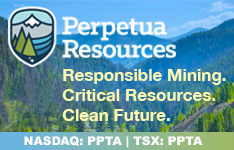In the United States, the official mortgage delinquency rate stands at 3.2%, Jim Osman reported for Forbes on July 12. And according to VantageScore and Investopedia, Osman wrote, lenders are observing a concerning trend: Early delinquencies are increasing more rapidly than any other form of consumer credit.
"The U.S. consumer is no longer just stretched. They're snapping," he wrote.
But jump north of the border and the Canadian mortgage industry is very different, noted Don Scott, the chief executive officer of private mortgage brokerage Frank Mortgage. The process and terms can be very different, and according to the Canadian Bank Association, Canadians "are generally careful borrowers."
“The Canadian mortgage market has demonstrated more resilience from a credit performance perspective than most markets, including the U.S., over time," Scott told Streetwise Reports. "The structural factors somewhat unique to Canada result in a more conservative approach and more tools to work around problems.”
Some stress in Canadian mortgage portfolios is expected in the near future and defaults are already rising, but they are rising from a very low base of about 0.2%, "which adds some perspective to the degree of total risk exposure," Scott said.
"Missed mortgage payments in Canada have tracked closely with employment conditions," Nathalie Bergeron wrote for the Bankers Association. "If the labor market weakens and more Canadians face job losses, arrears rates are likely to rise as well."
However, she noted, "Canadian borrowers have consistently maintained low mortgages arrears rates even throughout challenging periods such as the Global Financial Crisis and the COVID‑19 pandemic."
Notable Differences Between Countries' Mortgages
While there are numerous similarities between mortgage loans in the U.S. and Canada, there are also notable differences, according to a report by BMO Capital Markets published in 2022.
A key difference is the term length: In the U.S., the mortgage term coincides with the amortization period, meaning the mortgage will be fully paid off by the end of the term. In Canada, mortgages also have an amortization period that determines the overall length of the mortgage. However, the mortgage will likely consist of several shorter terms within that period. These terms set the interest rate and conditions for a specific duration and are renegotiated throughout the amortization period in Canada.
While the 30-year fixed-rate mortgage is a standard option in the U.S., Canada doesn't have anything quite like it, reported Amanda Alix for The Motley Fool. In Canada, the most common term available for a home loan is five years, with the loan amount spread out over a 25-year amortization period. Canadian banks also provide fixed-rate mortgages with terms of two, three, and four years.
This means that Canadians cannot rely on having a fixed interest rate for more than five years. At the end of a mortgage term, borrowers have the option to refinance. However, paying off a loan early to benefit from lower rates can be costly due to substantial prepayment penalties. Mortgage renewal business is very competitive, however, and borrowers can shop for the best deal at each mortgage maturity to optimize their financing.
"With close to CA$1 trillion of mortgage renewals (expected) in Canada in the next 12-18 months, lenders and mortgage brokers will be very busy, even if housing sales do not pick up materially," Scott noted.
Mortgage Performance to Be Tested in Coming Years
A post on the website FitchRatings on May 21 noted that Canadian mortgage performance will be tested over the coming years as borrowers who took out mortgages at historically low interest rates in 2020 through 2022 renew at much higher interest rates.
"However, delinquencies will remain low and well within our expectations as banks will continue to work with borrowers who are experiencing financial hardships and will aim to keep payments manageable," the post said. "In addition, the majority of Canadian provinces allow for recourse to the borrower in case of default on a loan, so there is an incentive for borrowers to work with the servicer to resolve loan delinquencies."
Canada's mortgage and housing markets are poised for a gradual yet consistent recovery, although the journey is overshadowed by trade uncertainties and the potential for additional U.S. tariffs, as outlined in a recent forecast by CIBC Capital Markets, Liezel Once wrote for Canadian Mortgage Professional on September 25.
The bank's latest analysis suggests that while a "soft landing" is probable, the path forward is laden with risks that might compel policymakers to intervene once more. "Since the trade conflict began, Canada's Plan A was to exert all efforts to reverse it," said Avery Shenfeld, chief economist at CIBC.
"While there might be some progress toward reducing U.S. tariffs on aluminum and potentially easing auto tariffs, even sectors currently not affected by tariffs will be wary of expanding capacity in Canada if it's intended for the U.S. market," Shenfeld noted.
Shenfeld also mentioned that exports are anticipated to rise from their recent lows, but to achieve full employment, businesses and governments will need to consider a "Plan B." This plan would involve public and private infrastructure investments to boost resource export opportunities, efforts to diversify trade, support for home construction, and a boost from consumers favoring Canadian-made products and domestic travel.
According to the Canadian online personal finance resource WOWA.ca, the majority of Canada's residential mortgage balances, totaling CA$2 trillion in the second quarter of 2024, are held by major banks. The leading bank lenders are RBC, which holds 21.7% of the market or CA$433.3 billion; and Scotiabank with 14.5% or CA$289.4 billion. Both companies are publicly traded.
Frank, a private mortgage brokerage based in Ontario, provides an accessible and transparent digital platform that enables consumers to research, explore, and apply for mortgages online, as stated on its website. Additionally, mortgage brokers are available to assist borrowers with home purchases, refinancing, and mortgage switches. Since 2021, this no-fee firm has been helping Canadians secure competitive mortgage rates quickly and efficiently.
Royal Bank of Canada
The country's largest bank, Royal Bank of Canada (RY:TSX; RY:NYSE), achieved unprecedented earnings in the third quarter, although the figures also highlighted increasing pressure within its mortgage portfolio, according to Canadian Mortgage Trends on August 27.
 Streetwise Ownership Overview*
Streetwise Ownership Overview*
Royal Bank of Canada (RY:TSX; RY:NYSE)
The bank's adjusted net income reached CA$5.5 billion for the quarter ending July 31. The reported net income climbed 21% to CA$5.4 billion, with diluted earnings per share rising to CA$3.84 from CA$3.26 in the previous year. Chief Executive Officer Dave McKay remarked that the outcomes "demonstrate RBC's relentless, long-term focus on our clients and our commitment to delivering on the bold growth ambitions we laid out at our recent Investor Day."
While mortgage growth remained consistent, there was a noticeable increase in impairments, the report noted. Personal banking net income surged 22% to CA$1.9 billion as the bank's residential mortgage balances grew to CA$418 billion, marking a 3% increase from the previous year, and home equity lines amounted to CA$38 billion. Net interest margins expanded to 2.61%, a rise of 24 basis points compared to the previous year.
The bank observed an increase in mortgage delinquencies over 90 days, particularly in the nation’s largest housing markets. In the Greater Toronto Area, the proportion of mortgages over 90 days past due increased from 27 basis points a year ago to 42 basis points in Q3. In Greater Vancouver, the rate went up from 20 to 27 basis points over the same timeframe.
Within the mortgage portfolio, the allowance for credit losses slightly increased to 0.16% of balances, compared to 0.15% in Q2 and 0.13% a year ago. RBC concluded the quarter with a Common Equity Tier 1 ratio of 13.2%, consistent with Q2 and significantly above regulatory requirements. The bank also returned CA$3.1 billion to shareholders through dividends and buybacks.
Despite the rise in impairments, most borrowers still possess substantial equity in their properties, the Canadian Mortgage Trends piece reported. Uninsured mortgages initiated in the quarter had an average loan-to-value ratio of 70%, while the overall portfolio is considerably lower at 58%. A significant portion of RBC’s mortgage portfolio (80%) is uninsured. Fixed-rate loans constitute about two-thirds of the bank’s residential mortgage balances, with variable-rate mortgages making up the remaining one-third.
RBC provides a diverse range of mortgage options, according to Forbes Advisor Canada's 2025 review of the company.
"You’ll find a healthy portfolio of mortgage terms, from six months to 10 years, as well as Canada's only 25-year fixed-term mortgage," the report noted. "Whether you're a first-time buyer, building a new construction home or looking south of the border for a vacation property, RBC offers a mortgage solution, plus the convenience of a full suite of banking services."
However, while RBC does offer some discounted rates, their posted rates are not the most competitive in the market, Forbes said. Additionally, a good credit score is required to qualify, which might be a barrier for some borrowers.
Some pros include an extensive selection of mortgage terms, including short-term and open mortgages, as well as Canada's only 25-year fixed-term mortgage, Forbes noted.
Others include discounted rates on popular terms; a comprehensive suite of banking services, including the RBC Homeline Plan (mortgage plus credit line); the U.S. HomePlus Advantage program, which provides full-service support for purchasing property in the U.S.; and a 120-day rate hold.
Forbes said cons included higher rates, the need for a good credit score, and no options for a three-year insured or a three-year variable mortgage.
RBC stands as the largest bank in the nation by both market capitalization and total assets. It provides banking and financial services primarily to clients in Canada and the United States, according to a report by Sure Dividend on September 8.
On August 27, 2025, RBC announced robust fiscal third-quarter 2025 results, propelled by "strong revenue momentum across our businesses and solid operating leverage, including the realization of the CA$740 million in annualized cost synergies from the acquisition of HSBC Bank Canada," as highlighted in the Q3 earnings call. The bank reported a 16% increase in revenue year-over-year, reaching around CA$17.0 billion, said the site, which ranked the bank as the top bank mortgage lender in Canada based on "total expected returns over the next five years."
Net income rose 21% year-over-year to CA$5.4 billion, with diluted earnings per share also increasing 21% to CA$3.75. Adjusted net income was 17% higher at CA$5.4 billion, and adjusted diluted EPS reached CA$3.84, up 18%. The bank maintained a strong capital position with a Common Equity Tier 1 ratio of 13.2%, unchanged from the previous year.
According to Refinitiv, less than 1% of the company is held by insiders and management and strategic entities. About 49% is with institutions. The rest is retail.
Top shareholders include The Vanguard Group Inc. with 4.58%, RBC Global Asset Management Inc. with 2.67%, RBC Dominion Securities Inc. with 2.29%, TD Asset Management Inc. with 1.75%, and CIBC World Markets Inc. with 1.68%.
Its market cap is CA$287.6 billion with 1.4 billion shares outstanding. It trades in a 52-week range of CA$151.25 and CA$206.90.
Bank of Nova Scotia
On September 24, shares of Bank of Nova Scotia, or Scotiabank (BNS:TSX; BNS:NYSE), moved above their 200-day moving average during trading, according to a report by MarketBeat the next day. The stock's 200-day moving average is CA$74.56, and it reached a high of CA$89.55.
BNS has been the focus of several research reports, MarketBeat said. On August 27, Canaccord Genuity Group raised their target price for Bank of Nova Scotia from CA$87 to CA$90, assigning the company a Buy rating.
Similarly, Bank of America increased the company's target price from CA$78 to CA$88 in a report on the same day, MarketBeat reported. Jefferies Financial Group also lifted their price target from CA$83 to CA$86, while Desjardins raised their price target from CA$79 to CA$85, giving the stock a Hold rating.
The bank recently announced an increase in its dividend. Shareholders on record as of July 29 received a quarterly dividen of CA$1.10 per share, which translates to an annualized dividend of CA$4.40 and a yield of 4.9%, marking increase from the previous quarterly dividend of CA$1.06, the website reported.
The Sure Dividend list ranks it as No. 3 with projected annual returns of 6.2% over five years.
Commonly known as Scotiabank, it is the fourth-largest financial institution in Canada, following the RBC, Toronto-Dominion Bank, and Bank of Montreal.
On August 26, it released its fiscal third-quarter 2025 results. During the quarter, revenue increased by 13% year-over-year to CA$9.5 billion and net income reached CA$2.5 billion, marking a 32% increase from the previous year. Consequently, diluted earnings per share surged 30% to CA$1.84. Return on equity (ROE) improved to 12.2% from 9.8% a year earlier.
The bank's provision for credit losses as a percentage of average net loans and acceptances was 0.55%, and the provision for credit losses on impaired loans as a percentage of average net loans and acceptances was 0.51%, Sure Dividend noted. Importantly, these metrics remained unchanged from the previous year.
According to the Forbes Best Mortgage Lenders in Canada for 2025, "If you're already a client with Scotiabank (the trade name for the Bank of Nova Scotia), adding a mortgage to your financial portfolio is a no-brainer due to this lender's good selection of mortgage terms. Unlike other major banks, Scotiabank doesn't publish special or discounted rates, so you'll need to negotiate to get the best one."
Some other pros for the bank include special programs for newcomers and second-home buyers, and rebates for switching your mortgage. Cons include no online application option and no special or discounted rates available online.
Less than 1% of the company is held by insiders and management and strategic entities. About 53% is with institutions, according to Refinitiv. The rest is retail.
Top shareholders include The Vanguard Group Inc. with 4.39%, RBC Wealth Management International with 3.59%, CIBC World Markets Inc. with 2.28%, RBC Global Asset Management Inc. with 2.25%, and Goldman Sachs & Co. Inc. with 2.1%.
Its market cap is CA$111.91 billion with 1.24 billion shares outstanding. It trades in a 52-week range of CA$62.57 and CA$90.35.
Frank Mortgage
A privately held mortgage brokerage based in Ontario, Frank Fintech Inc. provides a user-friendly, open, and transparent digital platform that enables consumers to research, explore, and apply for mortgages online, as stated on its website. Additionally, mortgage brokers are available to assist borrowers with home purchases, refinancing, and mortgage switches.
Since 2021, this fee-free company has been aiding Canadians in securing competitive mortgage rates swiftly and effectively.
"With the digital natives that are the homebuyers of today and tomorrow, digital-first solutions are in demand," the CEO Scott said. "Delivering what these customers want will win the day, and they want first-class service, as all customers do, but they also are demanding transparency and product choice that can only be delivered in an unbiased digital environment."
Earlier this year, Frank Mortgage teamed up with Hyyve Inc. to offer homeowners and home sellers on the Canadian real estate platform, Hyvve.ca, a seamless, streamlined, all-in-one experience.
Frank Mortgage's mortgage solutions were integrated into Hyyve's home services marketplace, allowing homeowners to connect with top real estate agents, secure financing, and access essential services well before listing their homes. Frank Mortgage benefits by gaining early access to homeowners, enabling them to provide presale mortgage consultations, approvals, and financial planning well before they enter the market.
"This early engagement allows us to offer tailored mortgage solutions far ahead of the traditional real estate timeline, empowering sellers to transition seamlessly into buyers," Hyyve Chief Executive Officer Patrick Armstrong said at the time.
Scott has said that his company aims to make mortgages — and access to the variety of rates available at any given time — more attainable for Canadian homebuyers. This involves simplifying the mortgage acquisition process, which could be especially crucial for buyers in the current political and economic environment.
Frank Mortgage's target audience includes new homebuyers, Gen Zers, millennials, and even some late Gen Xers that are first-time homebuyers, the company said. But because they don't offer 30-year mortgages, "renewal business is huge," as well.
"The good news for those getting ready to renew their mortgage is that there will be competition among banks and lenders to retain and attract customers, which could lead to better deals for consumers," Victor Tran, a Toronto-based mortgage broker told Yahoo! Finance.
| Want to be the first to know about interesting Special Situations and Technology investment ideas? Sign up to receive the FREE Streetwise Reports' newsletter. | Subscribe |
Important Disclosures:
- Frank Fintech Inc. has a consulting relationship with Street Smart an affiliate of Streetwise Reports. Street Smart Clients pay a monthly consulting fee between US$8,000 and US$20,000.
- As of the date of this article, officers and/or employees of Streetwise Reports LLC (including members of their household) own securities of Frank Fintech Inc.
- Steve Sobek wrote this article for Streetwise Reports LLC and provides services to Streetwise Reports as an employee.
- This article does not constitute investment advice and is not a solicitation for any investment. Streetwise Reports does not render general or specific investment advice and the information on Streetwise Reports should not be considered a recommendation to buy or sell any security. Each reader is encouraged to consult with his or her personal financial adviser and perform their own comprehensive investment research. By opening this page, each reader accepts and agrees to Streetwise Reports' terms of use and full legal disclaimer. Streetwise Reports does not endorse or recommend the business, products, services or securities of any company.
For additional disclosures, please click here.











































